By the beginning of the nineteenth century, many prominent and influential Americans, particularly those from the southern states, had decided that the United States should not contain any Indians. Pretending that their primary concern was the “protection” of the Indians, they pressured Indians to move across the Mississippi River using open threats and harassment. In response some Cherokees began moving from their homelands in Georgia and Tennessee to the Southern Great Plains. When it became apparent that most Indians would not move voluntarily, the United States passed the Indian Removal Act in 1830. Under the legal authority of this Act, in 1838-1839, the United States military forcibly and brutally force-marched thousands of Cherokee to their new home in what would become Oklahoma.
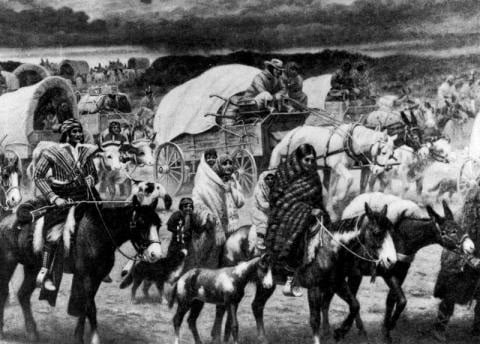
Upon their arrival in Oklahoma in 1839, some 13,000 Cherokee immigrants were to be issued subsistence rations by a government contractor. The government contractor, however, had little interest in Cherokee welfare and focused instead on enhancing profits with the government contract. The flour and meal which was provided to the new arrivals following their forced march was infested with weevils. Realizing that no-one in the government cared about these Indians, the contractors seized the opportunity to get rid of cattle which would be otherwise unsalable while charging the government for prime beef. Cherokee chief John Ross called the meat “poor and unhealthy.” When his complaints received no response, he purchased rations for the people from another private contractor.
In Oklahoma, the Cherokees faced the task of forming a new government. Three different groups were involved: (1) the Treaty Party which had the support of the Old Settlers and the planters, (2) the National Party which had the loyalties of two-thirds of the Cherokee population and was loyal to principal chief John Ross, and (3) the Keetoowah Society which had been formed prior to removal to prevent removal and considered itself to be a sacred institution rather than a political institution. American officials generally worked to discredit John Ross and the National Party as they viewed the Treaty Party as true patriots. The American officials generally portrayed Chief John Ross as a villain and the recent arrivals as “savages.”
John Brown, the first chief of the Western Cherokee, declared that the Eastern Cherokee had accepted the hospitality of the Western Cherokee and therefore they should live under the Western Cherokee government. However, John Ross argued for the continuation of the eastern Cherokee government. The Cherokee Nation—that is, the eastern Cherokee—had a written constitution and they had a far more elaborate law code than the Western Cherokee. The eastern Cherokee also constituted a major of the Cherokees in Oklahoma.
A constitutional convention was held and was presided over by Sequoyah, an Old Settler. Sequoyah and Jesse Bushyhead (an eastern Cherokee Baptist minister) worked out a compromise. The convention passed an Act of Union which was intended to unify the nation. The Old Settlers were guaranteed one-third of the seats in the new legislative body.
In the formation of the new government, John Ross was selected as principal chief; Joseph Vann, an Old Settler, was selected as second chief; and Young Wolf, an Old Settler, was chosen as speaker of the National Council. The Act of Union established the laws by which the Cherokees could live in harmony among themselves and deal with the American government which was threatening not only their traditional way of life, but their very existence.
In the Act of Union, the Cherokees made reference to inalienable rights and stated that each Cherokee had specific God-given rights. Since the Cherokee had the same God as that of the United States, this meant that the Cherokees should have the same political standing as other Americans. However, President James Polk stated:
“The Cherokees have been regarded as among the most enlightened of the Indian tribes; but experience has proved that they have not yet advanced to such a state of civilization as to dispense with the guardian care and control of the government of the United States.”
While American officials attempted to oust John Ross from the government, the United States did recognize the Act of Union as the Cherokee constitution.
The Act of Union did not bring about harmony or union. The animosities that divided the Cherokees continued. A group of 100 to 150 Cherokees associated with the National Party met in secret to discuss what to do about the Treaty Party. They felt that the men who signed the Treaty of New Echota were traitors and should be executed. They drew up a list of those who were to be killed and then drew straws to determine who would do each killing. John Ross did not attend the meeting.
The first to be killed was Elias Boudinot, the first editor of the Cherokee Phoenix, as the law of blood revenge was revived. Two other leaders of the Treaty Party, Major Ridge and John Ridge, were also murdered. Stand Watie managed to escape assassination. As signers of the Treaty of New Echota, all of these leaders were in violation of Cherokee law and the penalty for this violation was death. In one day, the prominent leaders of the Treaty Party were eliminated. These actions increased the friction between the two main Cherokee groups as those who had committed the murders now became targets of revenge.
The Council of the Cherokee Nation met shortly after the murders and declared that the three men had been outlaws since they had signed the removal treaty. The Council thus decreed that the killings were legal executions.
Stand Watie, distraught over the murders of his brother, uncle, and cousin, vowed revenge and began to raise a militia to kill John Ross.
The Secretary of War (who was in charge of Indian Affairs at this time), after listening to members of the Treaty Party, declared that the legitimate government of the Old Settlers had been illegally overthrown by Ross and the National Party. The American government demanded the arrest of those who had murdered the Treaty Party leaders. The American government refused to pay Cherokee annuities to the Ross government.
The divisions among the Cherokees continued to disrupt the peace and harmony of the nation for more than a generation.
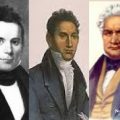
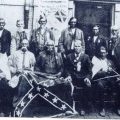
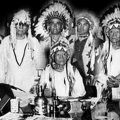
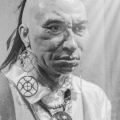
Leave a Reply